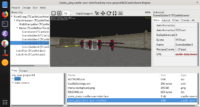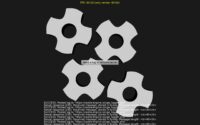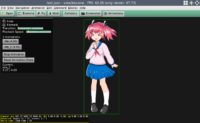 |
To focus on Castle Game Engine 7.0 release, I want to finish some important editor features.
-
Press F1 to open a WWW browser with the API reference of the selected property (when object inspector is focused) or at least selected component (in designer mode).
It jumps to proper location in the engine API reference or (in case of standard property like
TComponent.Name) to FPC reference. -
I started working on editor “gizmos” to visually transform a
TCastleTransforminstance. This is my biggest feature missing from CGE editor before release.You can now select the
TCastleTransforminstance if you first select a viewport, and then go into “Transform Select” mode. A bounding box of the selected object, as well as object under the mouse cursor, is shown. As part of finishing gizmos, this will be improved more (I think we can make the “Transform Select” mode possible without first selecting viewport, and I want to visualize the box+center in a more universal way, to be always visible). -
Small improvements to “Recent Projects” list: Detect projects on “recent” list with missing files, ask whether to remove them from list on opening, also update projects’ order properly.
-
If you’re on Linux (or FreeBSD) and want to have a nice menu entry for CGE and view3dscene, see here. Of course when installing from package (CGE is already in Debian, but for now an old version before editor) this would be automatically set up.




